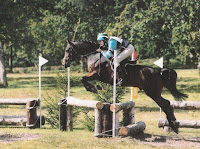Mythbusting for National Epilepsy Week - day 3 - cosmetics and beauty treatments
Myth: If you have epilepsy you can be denied some forms of cosmetic and beauty treatments
Fact: Some treatments may be best avoided but a blanket ban on treating people with epilepsy could be unlawful

Cosmetic and beauty treatments
People with epilepsy can and do enjoy cosmetic and beauty treatments
and spa days. However, while many treatments are perfectly safe, a small
number of treatments might be best avoided until your seizures are
better controlled.
Service providers should treat a person with epilepsy as an
individual, and consider whether reasonable adjustments are needed to
deliver the treatment safely. To deny people access to these goods and
services just because they have epilepsy is direct discrimination, and
for this reason unlawful.
Laser hair removal is one of the beauty therapy treatments that we
hear most about when it comes to restrictions. It removes unwanted hairs
by using a pulsating laser. This is a service that can be provided in
salons by beauty technicians, or devices can be purchased to use at
home.
We have been told by some people with epilepsy that they have been
denied laser hair treatment because of their epilepsy. The explanation
given is either:
- that the laser has an accompanying light that flashes when in use and could trigger seizures, or
- that the person with epilepsy could have a seizure during the treatment, and may burn or injure themselves on the laser.
The evidence – laser hair removal
The first suggestion, that the flashing of the laser could trigger a
seizure, is untrue. Many devices do have a flashing light to indicate it
is on. However, this flashes at a rate that should not trigger a
seizure in people with photosensitive epilepsy.
It may be possible to be injured if the laser is not properly
applied, or if the laser is applied to a sensitive part of the body.
This could happen if somebody moves during treatment. Some providers say
this is why a person with epilepsy should not have laser hair removal.
However, this rule assumes that people with epilepsy all have seizures
where they convulse, and this would lead to the laser not being properly
applied. It makes a judgement that this risk is sufficient to prevent
someone with epilepsy undergoing this treatment. But if the risks are
explained and accepted by the person with epilepsy, then we do not
believe a ban is appropriate.
In many cases, even people who can prove that they are unlikely to
have a seizure will have to provide a letter from their doctor to
support this. We believe this is unnecessary.
Case study
One person who contacted us after being refused a laser hair removal
session is Claire from Cardiff. Claire explained what had happened: “I
was told that I would not be treated when I turned up for a laser hair
removal session. I had been before but since then my seizures had
increased. This was the most embarrassing, upsetting experience and I
felt extremely discriminated against. “I was refused the treatment
despite the fact that I had my mother with me for support and safety
purposes 'just in case'. More importantly, I explained to the clinical
staff that laser treatment did not affect my epilepsy as I am not
photosensitive. This was backed up by a letter from my consultant which
they had requested before they initially began any of my sessions. “I
was sent home crying, and because I was so embarrassed and upset, I
asked for a refund for the sessions that had not been used. This request
was declined, despite a formal letter being sent to the manager of the
establishment. I feel I have really been discriminated against.”
Challenging the myth
A person with epilepsy can be denied access to a service if it is
potentially hazardous to their own, or another person’s, health and
safety. There would also have to be no reasonable adjustment that could
be made to make delivery of the service safe.
If possible, contact the service provider in advance of your
appointment to discuss your epilepsy. You should explain what happens
before, during and after your seizure, the frequency of your seizures or
how long you have been seizure free. It might also be helpful to
explain your seizure pattern (for example, if you only have them at
night, or on waking).
This information will give the service provider the opportunity to consider whether reasonable adjustments
are required to make a service safe. This is a requirement outlined in
the Equality Act and Disability Discrimination Act. Contacting the
service provider before your visit gives them time to make the
reasonable adjustments required. For example if you are going for a
massage, there are specific oils that should be avoided. The service
provider can make sure that more appropriate oils are available before
your visit.
If you are wrongly denied access to a service, there
are other things that you can do. For example, you could show the
service provider a copy of our position statement on cosmetic and beauty therapies. This statement briefly explains the laws that protect you from disability discrimination.
As a next step you could use this template letter to further explain that you believe that you have been discriminated against because of your epilepsy.
Some beauty chains have told Epilepsy Action that they can’t offer
laser hair removal to people with epilepsy because of manufacturer
guidelines. We understand this position, from a safety and legal point
of view. We have taken this issue up with the manufacturers of some of
the leading laser hair devices. We continue to challenge this advice
with manufacturers, providers and the organisations who regulate them.



